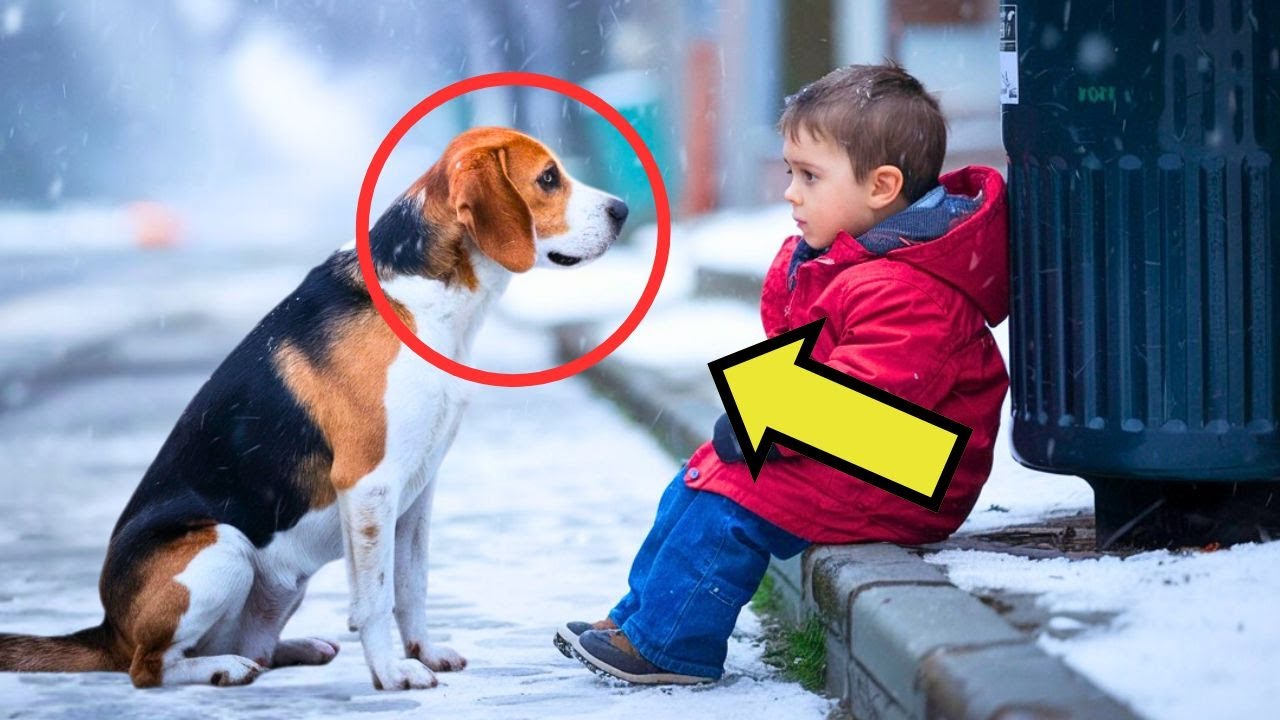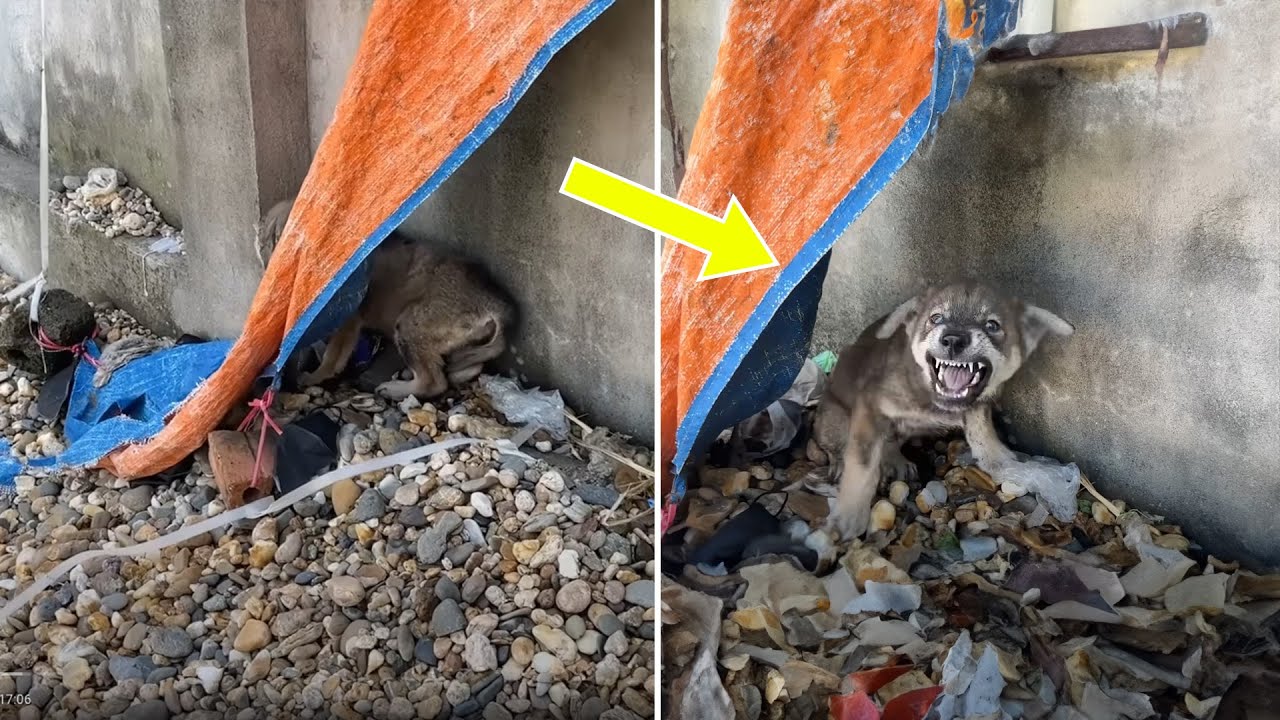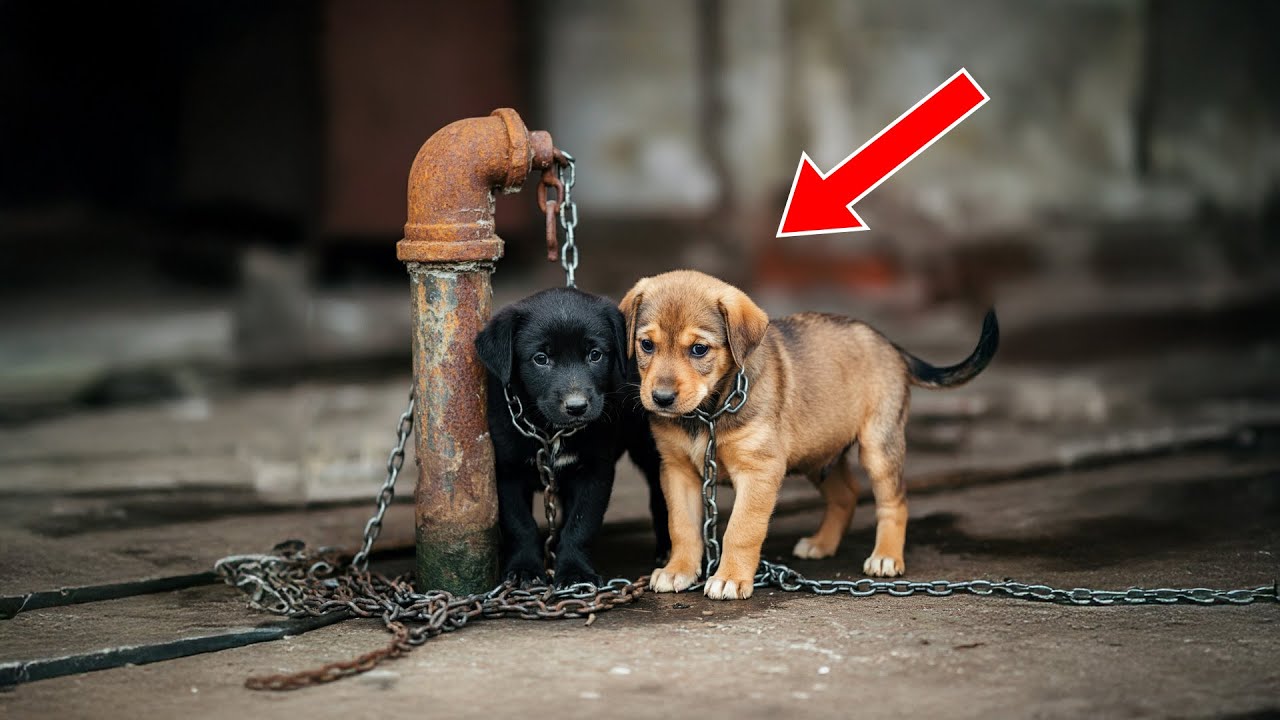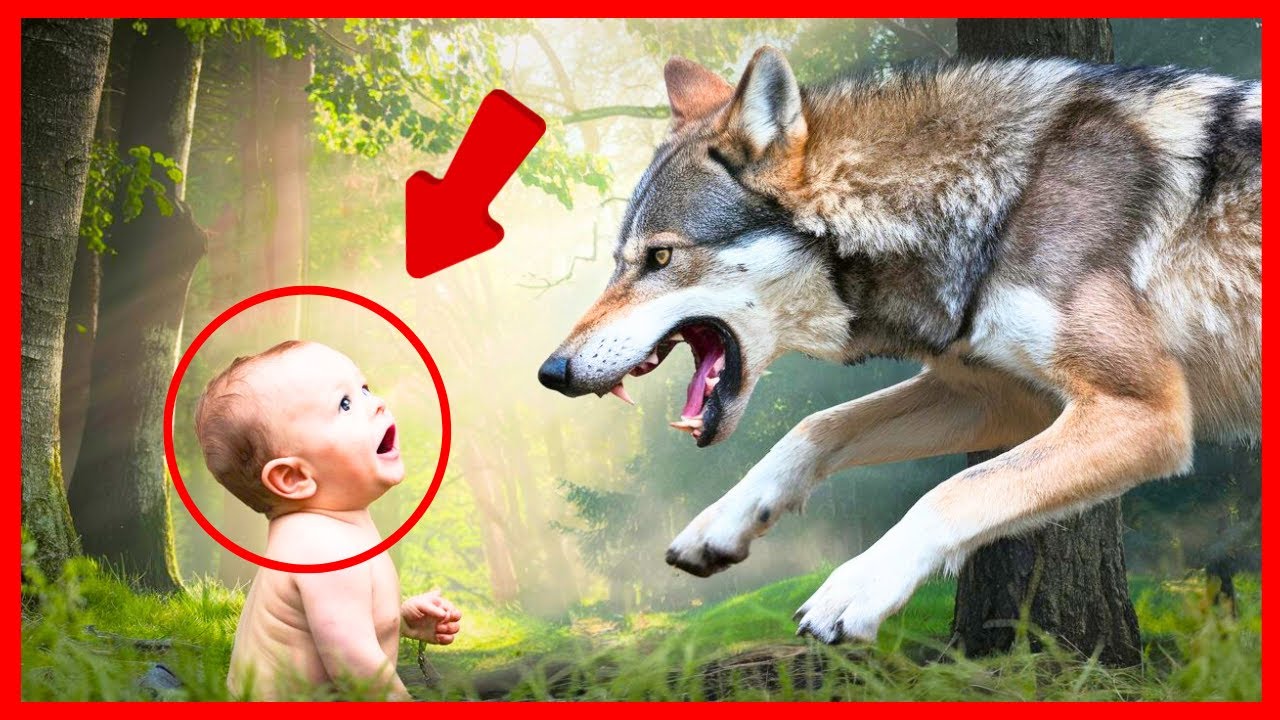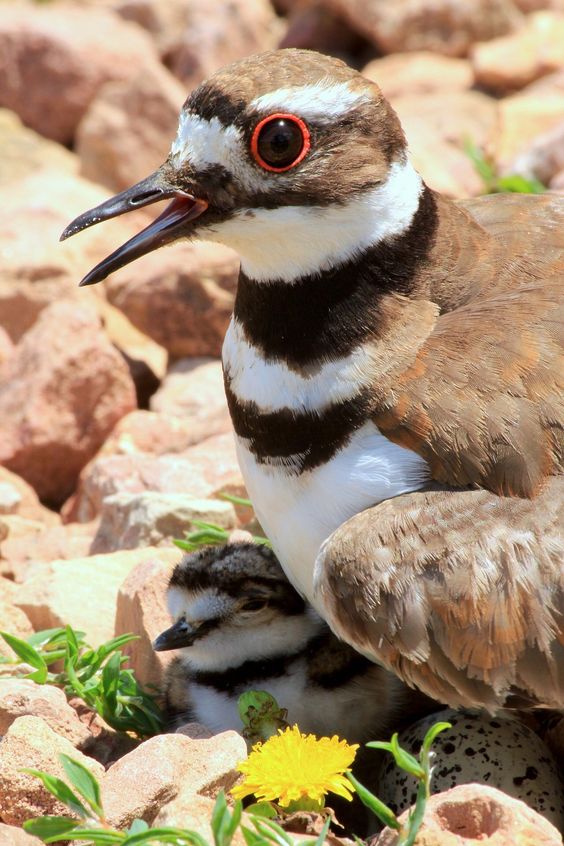
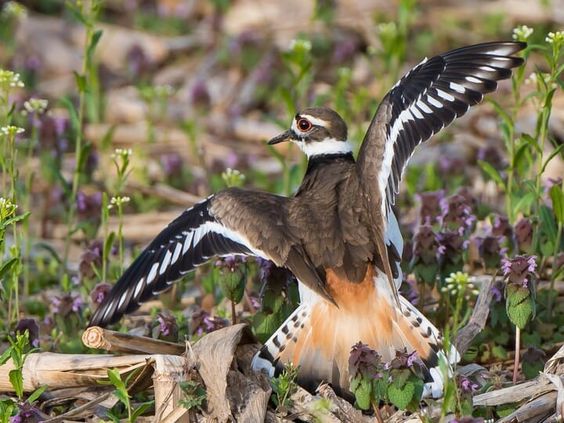
The Killdeer (Charadrius vociferus) is a medium-sized shorebird that is native to North America. It is a member of the Charadriidae family, which includes plovers, dotterels, and lapwings. The Killdeer is known for its distinctive vocalizations and agile movements.
The Killdeer is easily recognizable with its brown and white plumage and two black bands across its chest. It has a long, pointed bill that it uses to probe the ground for insects, worms, and other small invertebrates. In addition, the Killdeer has a unique adaptation that allows it to detect the Earth’s magnetic field and navigate during migration.\

Killdeers are found in a variety of habitats, including shorelines, fields, and open areas. They are highly vocal, with a distinctive call that sounds like “𝓀𝒾𝓁𝓁-deer.†They use this call to communicate with each other and to warn of potential predators. Interestingly, the Killdeer’s call is not only used for communication, but also to establish territory and to attract mates during breeding season.
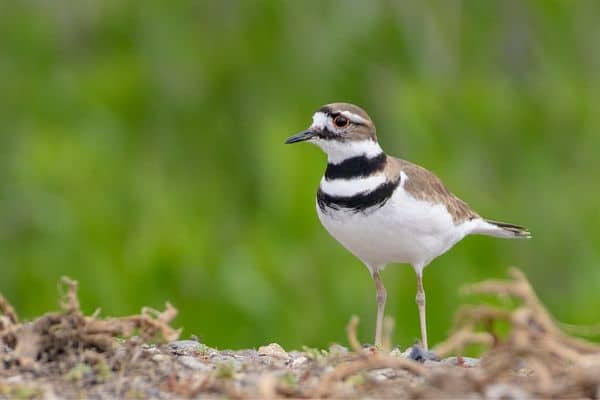
One of the most interesting behaviors of the Killdeer is its “broken-wing†display, which it uses to distract predators away from its nest. When a predator approaches, the Killdeer will pretend to have a broken wing and lead the predator away from its nest and young. This behavior is not only fascinating, but also demonstrates the bird’s intelligence and adaptability.
Killdeers are migratory birds, spending their winters in the southern United States, Central America, and northern South America. During breeding season, they form monogamous pairs and build their nests on the ground, often in gravel or on open ground. The nest is a simple depression in the ground, lined with small stones, twigs, and other debris.

The Killdeer is a fascinating and vocal bird that is beloved by many in North America. Its agility and intelligence serve as a reminder of the incredible adaptability of wildlife, and its presence in the ecosystem is an important part of our natural world. As such, it is important that we continue to study and protect this species, ensuring its survival for generations to come.

